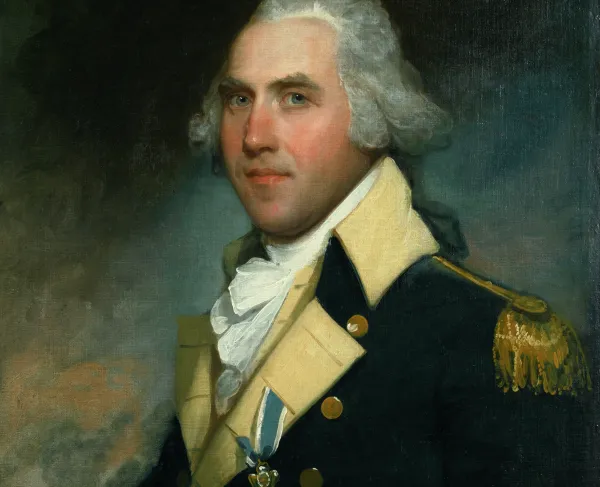Peter Gansevoort

“It is my determined resolution. . . to defend this fort and garrison, at every hazard, to the last extremity. . .,” the then colonel Peter Gansevoort responded to British summons for surrender from General Barry St. Leger at the Siege of Fort Stanwix in August 1777. He meant what he said and successfully defended the fort that was the key to the Mohawk Valley from the British in their attempt to cut off the Northern Army and New England from the rest of the colonies.
“The Hero of Fort Stanwix” was born in Albany, New York in July 1749 to a prominent family. As a young man, Gansevoort followed in the footsteps of his father and pursued family-based business practices like brewing and lumbering. In 1775, he joined the Albany County Militia as a lieutenant, but became a major of the 2nd New York Regiment later that year when Continental troops were raised to invade Canada. In June 1776, he was given the command of the 3rd New York Regiment at Lake George as a lieutenant colonel. In the spring of 1777, the 3rd New York was sent to defend Fort Stanwix (also known as Fort Schuyler) where Gansevoort would earn his renown.
Fort Stanwix would become known as “the fort that never surrendered” after Gansevoort and his men of the 3rd New York, two Massachusetts detachments, and Oneida allies successfully held off a British siege led by General St. Leger for 21 days in August 1777. St. Leger’s force fled back to Canada which later contributed to the crucial American victory at Saratoga and America’s alliances with France and the Netherlands.
From fall 1777 through 1778, Gansevoort went back and forth between Fort Stanwix and Albany, New York, to be with his new wife, Catherine Van Schaick, the daughter of an Albany merchant. The couple baptized six children in the Albany Dutch Church from 1779 to 1791.
Gansevoort and the 3rd New York were stationed between Saratoga and Schenectady from 1778-1779 and participated in the Sullivan-Clinton expedition that destroyed over forty villages of the Six Nations (Seneca, Cayuga, Onondaga, Oneida, Mohawk, and Tuscarora) that were British allies. During the winter of 1779-1780, Gansevoort fell ill and did not rejoin his regiment until the spring of 1780. The latter half of 1780 was filled with activity upon Gansevoort’s return. Gansevoort and the 3rd New York became part of a garrison at West Point that summer, he took temporary command of the New York Brigade, and then he had headquarters at Fort Saratoga while the regiment was posted throughout the Hudson Valley in the fall. In 1781, the 3rd New York consolidated with the 1st New York Regiment and Gansevoort took command of the Albany County Militia at the rank of brigadier general until 1809.
After the Revolution, Gansevoort settled back into life in Albany. He continued his family business in brewing and lumbering and purchased land that was once confiscated loyalist land to build a mill town, which eventually became Gansevoort, New York. In 1788, he became an Indian Commissioner, was appointed Sheriff of Albany County in 1790, and was a United States Military Agent in 1800.
Gansevoort contracted a cold in the winter of 1811-1812 that he had until the day he died on July 2, 1812. He is the maternal grandfather of Herman Melville, the author of Moby-Dick.
Related Battles
34
66





